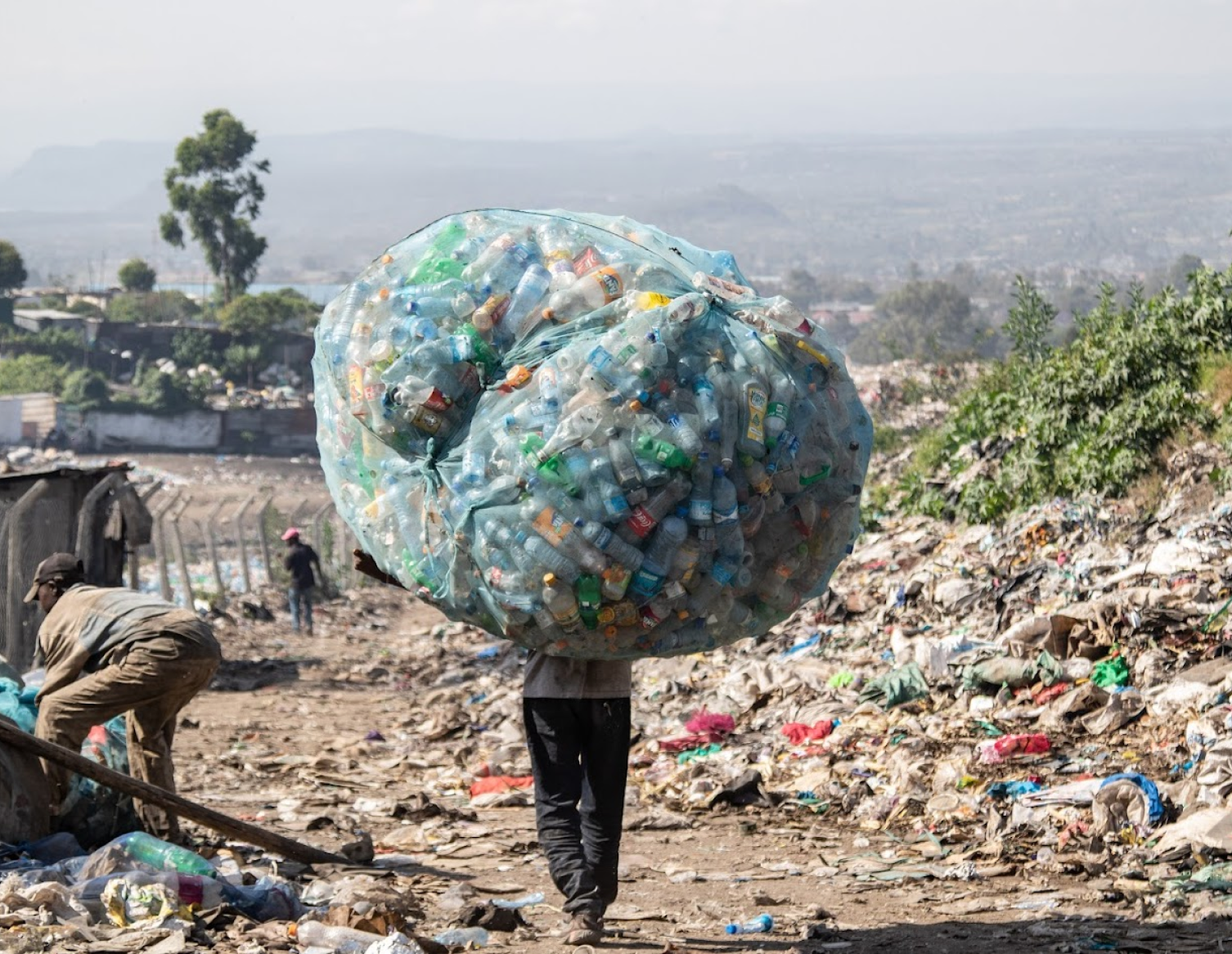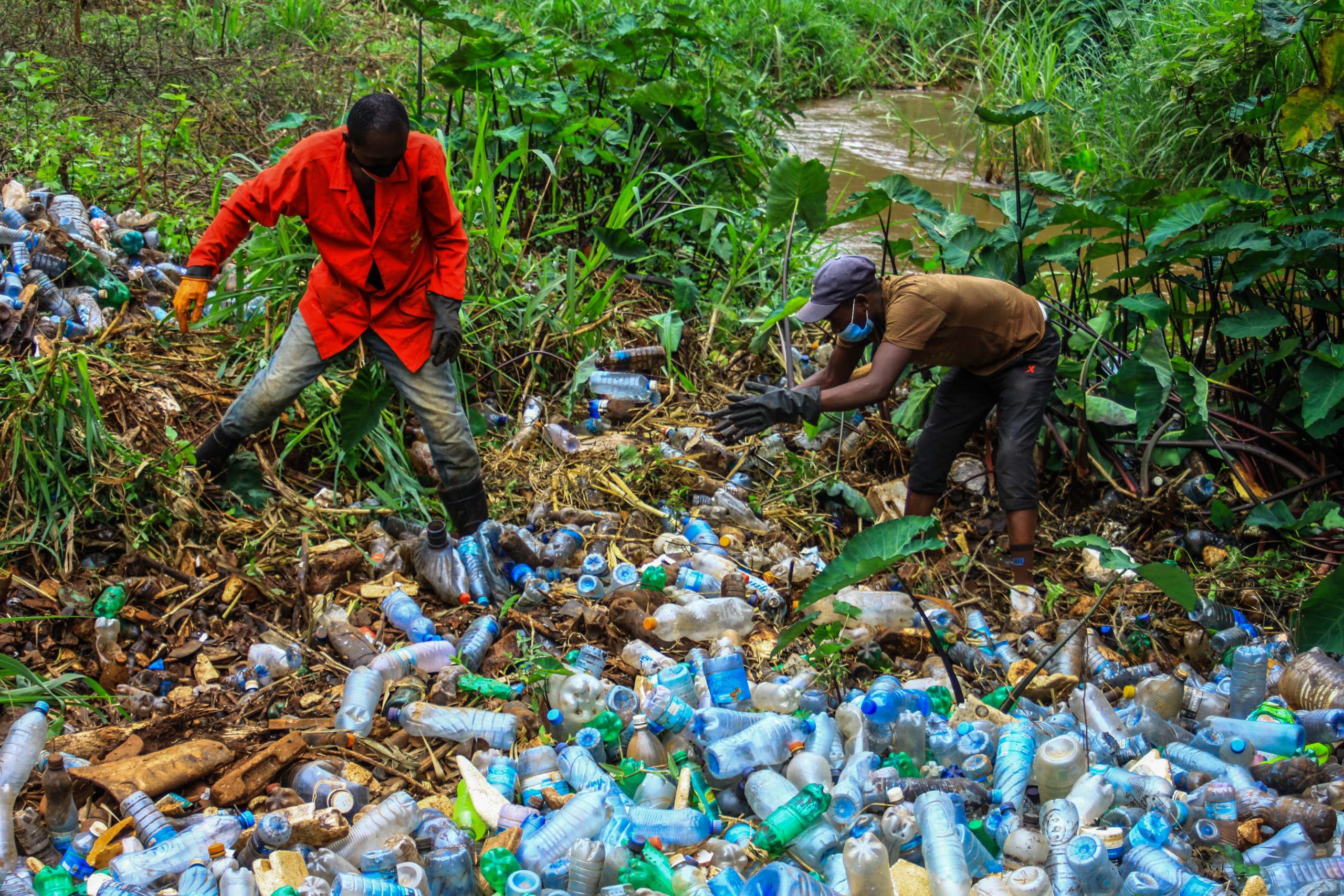Plastic in the modern day
Plastic is useful in many ways – it is low cost, light weight, durable and easily manipulated to create products. Over time, plastic has revolutionised various sectors from food packaging to automotive parts to medical equipment, and remains a necessary material for many purposes.
However, the make-use-dispose way we deal with plastics throughout its life cycle has severe impacts on environmental health, human health and the climate. Let’s look at the bigger picture.
The bigger picture
- In just two decades, ever-increasing plastics consumption has nearly doubled the amount of plastics we produce every year, from 234 million tonnes in 2000 to 460 million tonnes in 2019.1
- Plastics account for 3.4% of global greenhouse gas emissions.1
- Nearly 80% of all plastics humankind has ever created still exists in the environment and landfills.2
- 17% of the species affected by marine plastic pollution are on the Red List of Threatened Species of the International Union for Conservation of Nature.3
- Plastic has been found in our lungs4 and our blood.5
Video by Big Blue Communications
The problem
Plastic has now been found in every corner of the planet – from the tallest mountain tops to the deepest ocean trenches and the human body. Most plastics do not disintegrate naturally in the environment, and even most biodegradable or compostable plastics require industrial conditions. Once in the environment, plastic becomes nearly impossible to control or contain. It breaks up into larger plastic pieces (macroplastics) and small, barely visible micro- and nanoplastics. This makes its disposal and complete removal extremely difficult.
What’s more, the greenhouse gas emissions are not limited to the production or disposal of plastics: in the process of breaking down, plastic continues to emit greenhouse gases that contribute to global climate change.
Plastic can take hundreds of years to break down.

Most marine plastic pollution comes from land-based sources.6
Land-based sources include:
- Leakage from plastic production (e.g. pellets or shavings)
- Unmanaged plastic waste disposal, such as dumping or littering
- Debris from construction, ports, commercial and industrial facilities
- Trash blown out of garbage containers, trucks, and landfills, often in extreme weather conditions
Sea-based sources of plastic pollution include dumping of waste at sea or ports, and abandoned, lost, or otherwise discarded fishing gear.
The build up of plastic waste globally is causing major pollution from mismanaged landfills, clogging up river basins and waterways thus contaminating our seas, air and land, negatively impacting human health, wildlife, ecosystems, and the natural environment. All plastic pollution also contributes to climate change through greenhouse gas emissions.

Plastic pollution has economic, cultural and social impacts.
While we have benefited from plastics, we have also taken advantage of their convenience. Single use plastics have created a disposable lifestyle for many around the world but the consequences are disproportionately felt by the most vulnerable communities around the world.
Globally, managing plastic waste costs US$32 billion7, which includes collection, recycling, sorting and disposal of waste – imagine what else this money could be spent on.
In addition to the environmental impacts of plastic pollution, the social consequences of it are enormous, including:
- Flooding of urban areas and rural communities
- Migration caused by increased flooding and climate change
- Loss of livelihoods, especially in agriculture, fisheries and tourism
- Decreased quality of drinking water and food
- Disruptions to health and sanitation, including spreading of diseases.
Ocean health is critical in regulating climate.
The impacts of the current culture of plastics use are not limited to physical damage as the whole plastic life cycle, from the extraction of fossil fuels to disposal in landfills or incinerators, contributes to climate change.
And plastic does this twice over:
- First, the plastics industry releases more greenhouse gas emissions per year (3.4%)1 than the global aviation sector (2.4%)9, which directly impacts the climate.
- The second, indirect impact stems from marine plastic pollution as it disturbs the functioning and health of key ocean ecosystems and species that regulate the global climate. Together, these two form a positive feedback loop that worsens the consequences of both the direct and indirect impacts of the plastics industry.
How do we fight the plastic problem?
We need systemic change and transitions towards sustainable solutions. The starting point is evidence-based analysis of existing policies that helps governments and organisations to plan and implement sustainable and evidence-based plastic policy.
We have found that the existing plastic policy landscape is often far too isolated and specific to individual plastic products or stages within the plastic life cycle. Such policies include plastic bag bans, offering substitution materials and introducing taxes or fees to help curb the reliance on problematic plastics. However, there are vast gaps in the evidence behind such policies. Our first project, “A global review of plastics policies to support improved decision making and public accountability”, addresses these gaps.
Policies implemented in isolation and lack of evidence together reduce the effectiveness of innovative measures in tackling the plastic problem.
It is not enough to simply focus on plastic waste management. The upstream of the plastics life cycle – from extraction of fossil fuel resources all the way to product design and production – must be effectively governed. Big, but necessary, interventions include
- Re-designing the way we manufacture and use plastics towards more environmentally and economically responsible approaches; and
- Applying sustainable and circular approaches in the plastic economy where possible, especially encouraging reuse of plastic materials and products.
Sources
- OECD (2022), Global Plastics Outlook: Economic Drivers, Environmental Impacts and Policy Options. OECD Publishing, Paris, https://doi.org/10.1787/de747aef-en
- Geyer, R., Jambeck, J. R., & Law, K. L. (2017). Production, use, and fate of all plastics ever made. Science Advances, 3(7). https://doi.org/10.1126/sciadv.1700782
- Gall, S. C., & Thompson, R. C. (2015). The impact of debris on marine life. Marine Pollution Bulletin, 92(1), 170–179. https://doi.org/10.1016/j.marpolbul.2014.12.041
- Jenner, L. C., Rotchell, J. M., Bennett, R. T., Cowen, M., Tentzeris, V., & Sadofsky, L. R. (2022). Detection of microplastics in human lung tissue using FTIR spectroscopy. Science of The Total Environment, 831, 154907. https://doi.org/10.1016/j.scitotenv.2022.154907
- Leslie, H. A., Velzen, M. J. M. van, Brandsma, S. H., Vethaak, A. D., Garcia-Vallejo, J. J., & Lamoree, M. H. (2022). Discovery and quantification of plastic particle pollution in human blood. Environment International, 163, 107199. https://doi.org/10.1016/j.envint.2022.107199
- Napper, I. E., & Thompson, R. C. (2019). Marine Plastic Pollution: Other Than Microplastic. In Waste (pp. 425–442). Elsevier. https://doi.org/10.1016/B978-0-12-815060-3.00022-0
- WWF and Dalberg. (2021). Plastics: The cost to society, the environment and the economy. WWF – World Wide Fund For Nature. Gland, Switzerland. https://wwfint.awsassets.panda.org/downloads/wwf_pctsee_report_english.pdf
- EESI (2022), Issue Brief: The Growth in Greenhouse Gas Emissions from Commercial Aviation. Environmental and Energy Study Institute. https://www.eesi.org/files/IssueBrief_Climate_Impacts_Aviation_2019rev2022.pdf